I am constantly fascinated to read new reports on how music is so good for us all! I love to read about how music helps all sorts of aspects of our lives – from improving our coordination to developing our memory, to helping us to relax and lower our blood pressure to encouraging our imagination and creativity, to help us focus and to improve our literacy and numeracy. Music is such a crucial, essential part of learning, not just for youngsters, but actually for us all.
We know that mobile technology can work wonders for the classroom, but how can it be used during Performing Arts productions? Ian Fletcher of Driftwood Software explains how the iPad is the perfect tool for setting the right atmosphere.
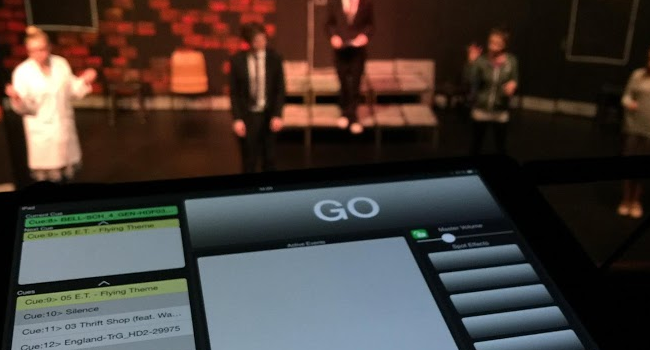
Close your eyes and listen. What do you hear? If the answer is “nothing”, then try again. There are very few places in the world that are completely silent. Every room, every environment has a sound. Understanding this and using these soundscapes correctly within a school or college Drama production can make a massive difference to the suspension of disbelief you are trying to create. And the act of thinking about and designing them can be a fun exercise for a drama class and make sound a more inclusive subject.
When thinking about what we would like our students to be able to do, the above definition really appeals to me. I believe that in preparing our learners for the real world, which is competitive and often challenging - we should also be teaching them how to (in the words of the dictionary definition) create ‘meaningful ideas, forms, methods and interpretations.’ We don’t want our students to be passive consumers of digital or analogue culture, I want them to be involved in shaping it.
Bowie. David Bowie. Yes, that’s right, the chameleon of pop music. What would Bowie do if he was in charge of the education system? This is a question I have been coming back to over the last few months. With all the educational changes, upheaval and strikes, I have been thinking more and more about what would happen and change if Bowie was in charge.
We’ve been lucky to feature a host of enthusiastic SEN teachers on IMS, all of them fighting to make sure that pupils with such hurdles are afforded an excellent education. Here, freelance musician and music educator Jonathan Westrup discusses what best practice looks like for SEN pupils in music education.

The question posed by that title would no doubt have given many music services professionals the jeebies even a few years back. Put simply, there were not many music teachers out there with the requisite experience and ongoing professional support to address it satisfactorily. And when we use the term ‘SEN’, what do we precisely mean? Is it a group of children with dyslexia in a mainstream secondary? Or a small class of children with PMLD (Profound and Multiple Learning Difficulties) in a special school? They all have a right to an enjoyable, consistent music education but they all need different approaches and equipment to help ensure that happens.
I have recently returned from Junior School Leidschenveen, the British school in the Netherlands. It is an international school with a huge diversity of children from all over the world, and has an incredibly creative ethos. Myself and my colleague Laura Brown have had the pleasure of running 3 one week long creative projects over the last 18 months. The most recent demonstrated a core belief of mine: Real learning needs to engage and motivate - it needs to be experiential and immersive. It needs to matter to the learner - and to the teacher.
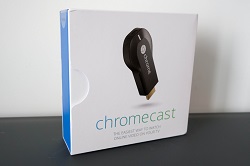
I have been fortunate to get my hands on a Google Chromecast over the Christmas period and have been exploring what the potential of this device could be for use in the classroom.
Google Chromecast is Google’s attempt to make it easier to bring web video to your TV via the use of their dongle. This plugs into an HDMI port on your telly and projector and allows you to send videos, music and other files to it via Andriod and iOS devices using Chrome browser on you computer. There are a limited amount of apps that take advantage of the Chromecast - YouTube, Netflix, Google Music, to name a few - however, this list is increasing. The function that I am quite excited about is the ability to stream an open tab in the Chrome browser and the potential for this. I will explain more about this later but first I am going to look at how to setup the Chromecast and then how it can be used in the classroom.
Photo credit: Scott Beale - image has been edited
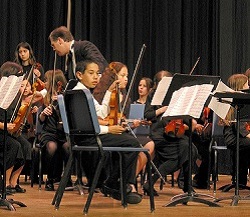
We often hear how music is not regarded as a core academic subject and as such will never be attributed as much importance as, for example, Maths and English.
Despite being a music graduate myself, and subsequently a professional musician, I also agree that core subjects should certainly be given more priority in schools.
So given that background, which is unlikely to change, I believe it’s important to find other ways to promote music in schools and ensure that everyone at least gets a chance to make music with their fellow pupils. At this point it’s important to differentiate between music as a purely academic subject (such as at A-Level) and music making in groups; for example, school choirs, orchestras or bands.
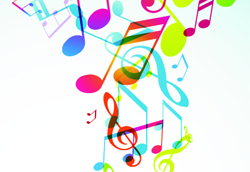
In part 2 of The Lost Art of Listening, we started to look at how we can analyse music through the process of identifying our initial impulses and reactions to it and then begin to think about the building blocks that go to produce these.
To briefly recap, we quickly and uncritically wrote down a list of qualitative words in response to hearing a piece of music. We then thought, in non-technical terms, about what produced these impressions and sought to label each of our responses according to the 5 fundamentals of: Timbre, Volume, Pitch, Texture and Time.
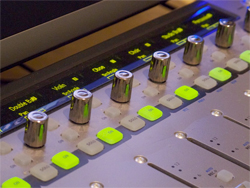
It is apparent that over the last few years more and more schools are investing in technology to enhance their music department. Back in my day as a student we were lucky to have an electronic keyboard and pair of headphones in order to try and cobble together a GCSE music composition. Nowadays, a lot of school music departments will have a plethora of keyboards all connected up to computers most likely running Cubase, Logic Pro or something similar.
As a result some might argue that creating music has become more about how skillful you are using computers than to do with any ability to play a musical instrument. You could of course respond to such an accusation with the question, does that matter? Music is an expression made by the composer. Yes, perhaps 100 or more years ago, music was very structured and only the style of the day was acceptable. I would be shot down in flames for saying that Mozart sounds like Haydn, and Bach is just a clever version of Vivaldi. But nevertheless, up until the latter half of the 19th century, each preceding period had its own relatively unique musical style and form. Charles Rosen’s book, “The Classical Style”, is clearly evidence of this relating to the 18th century styles of Mozart, Haydn and Beethoven.

A community-driven platform for showcasing the latest innovations and voices in schools
Pioneer House
North Road
Ellesmere Port
CH65 1AD
United Kingdom